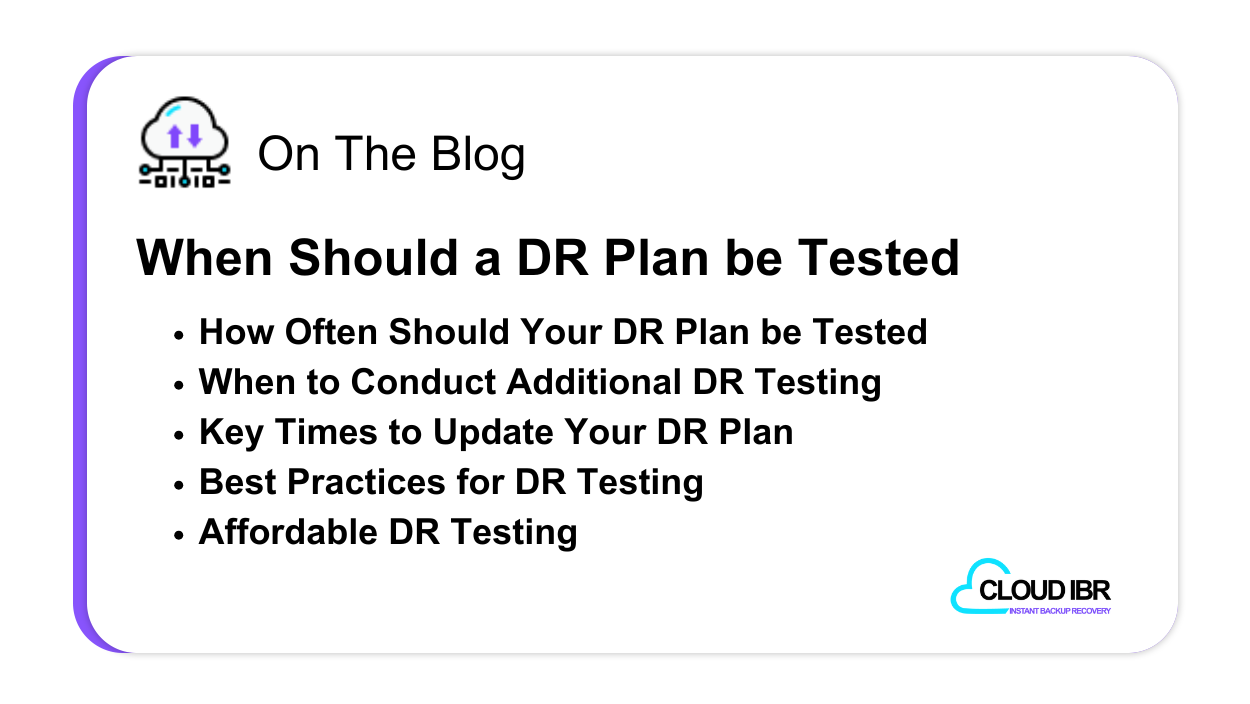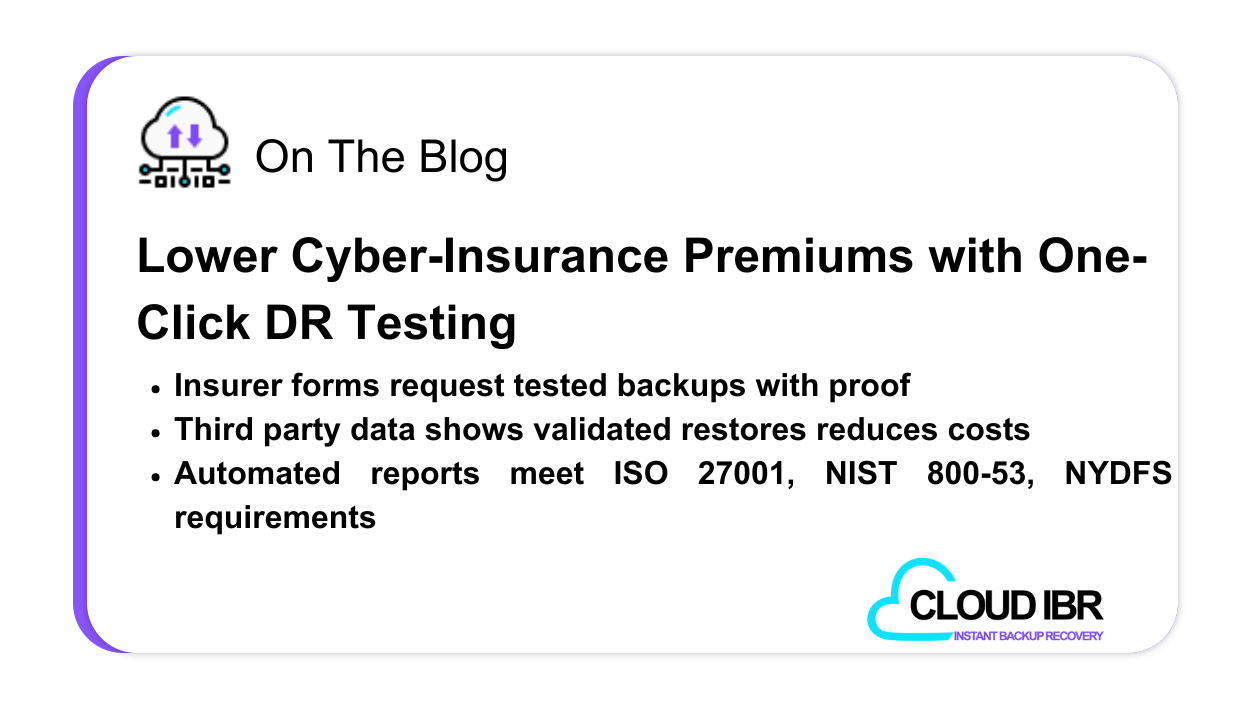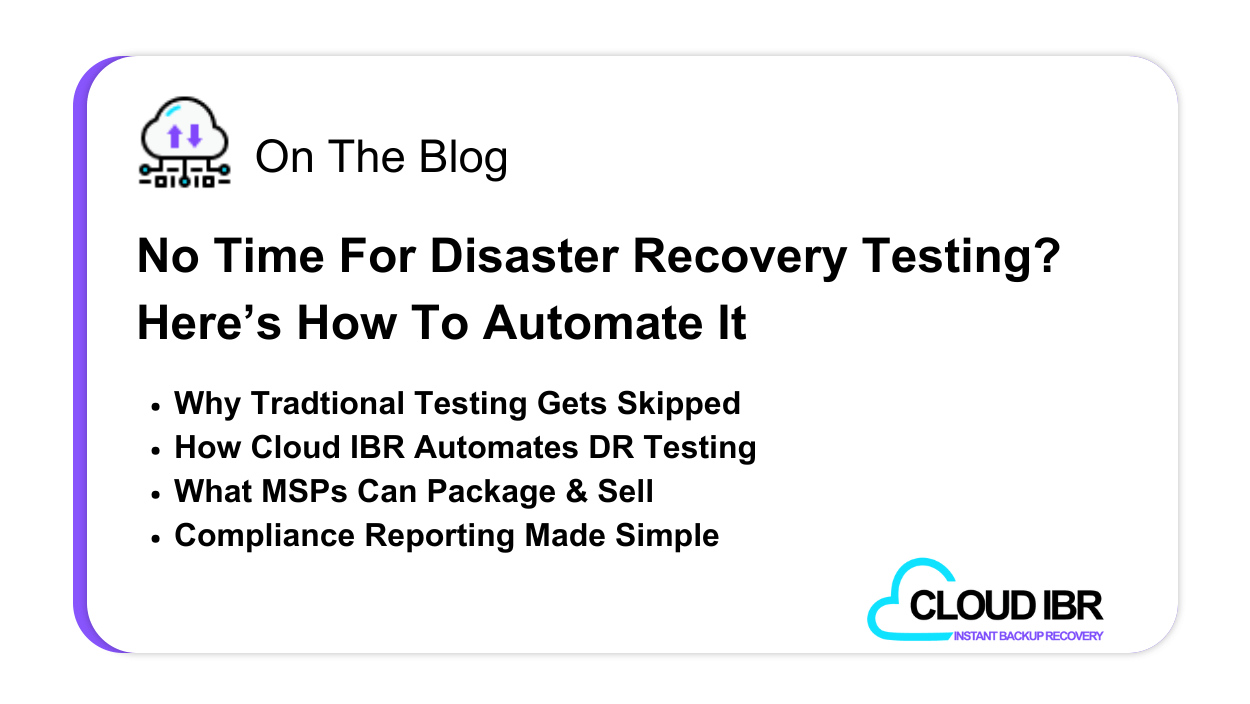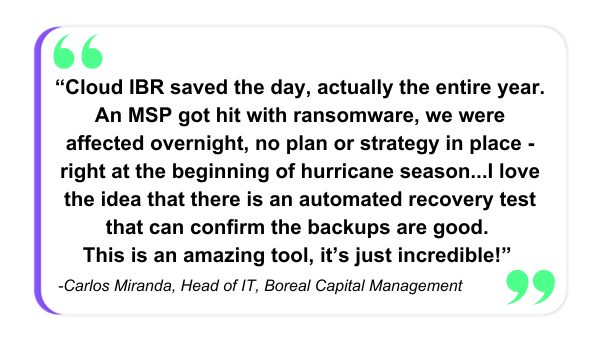Updated: January 7th, 2025
Though data loss, and discontinuation of work due to IT failure, are costly, disaster recovery plans are still largely missing from many business operations. Even those with plans often fail to follow disaster recovery testing best practices, with infrequent testing leaving critical gaps in protection.
For New York businesses the need for a disaster recovery plan, and testing, goes beyond financial foresight, as the amended Cybersecurity Regulation 23 NYCRR Part 500, requires businesses to have one. It also requires that the disaster recovery plan is tested at least once a year. In the following sections, we’ll explore key disaster recovery testing methods, scenarios, and best practices to help ensure your plan is both effective and compliant.
Jump to a Section
What is Disaster Recovery Testing
Types of Disaster Recovery Tests
Disaster Recovery Testing Scenarios
Best Practices For Disaster Recovery Testing
What Is Disaster Recovery Testing?
Disaster recovery testing involves simulating data loss and role-playing disasters to verify the effectiveness of your recovery plan. This includes testing your employees and ensuring your company can restore data and applications essential to operations.
Equally as important to an effective plan, is using these tests to identify weaknesses, address them, and improve your plan before a real event occurs. Though it can be required to test once a year, it’s recommended that businesses test quarterly or whenever there have been changes to the infrastructure.
Types of Disaster Recovery Tests
Checklist Testing
Tabletop Testing
Walk Through Testing
Simulation Testing
Parallel Testing
Full-Interruption Testing
Disaster Recovery Testing Scenarios
Equipment Failures
User Errors
Natural Disasters
Loss of Key Personnel
Malware risks
Disaster Recovery Testing Best Practices
- Test Frequently
- Test a Variety of Scenarios
- Test Both Your Technology & Your People
- Document Everything
- Define Metrics (How you performed and goals to improve)
- Evaluate the Results Of Your Tests
- Review and Update Your Plan Regularly
Affordable Disaster Recovery Testing
Related Posts

When Should a Disaster Recovery Plan be Tested
Having a disaster recovery (DR) plan is only the first step in protecting your company from data loss and ensuring business continuity in the presence of an unplanned event. In

Lower Cyber-Insurance Premiums with One-Click DR Testing
Why Insurers Keep Raising the Bar Cyber‑insurance premiums more than doubled in key markets as ransomware surged, and businesses grew more reliant on digital infrastructure during the shift to remote

No Time for Disaster Recovery Testing? Here’s How to Automate It
You’ve probably heard this, or said it, more times than you can count. It’s a common excuse in disaster recovery (DR). Not because testing isn’t important, but because traditional DR

